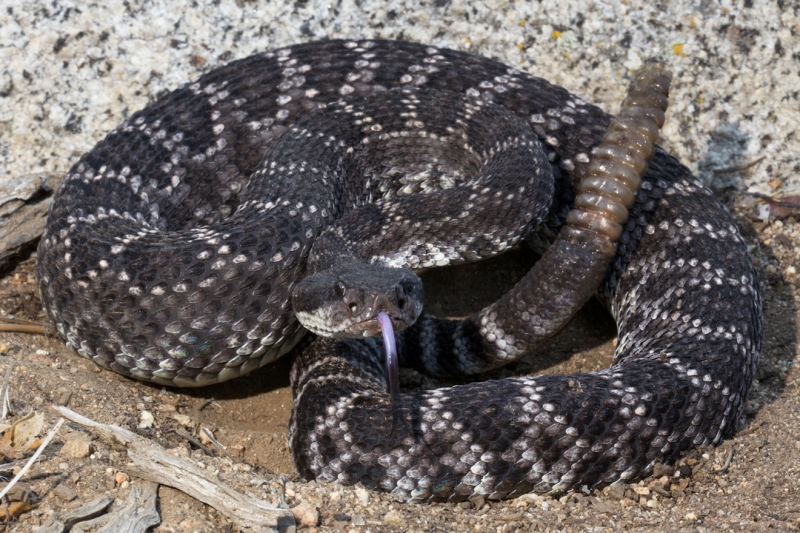Western Rattlesnake
The Western Rattlesnake (Crotalus oreganus), or Vibora de cascabel occidental in Spanish, is a pit viper with a large triangular head, thin neck, and a rattle on the end of its tail. When threatened, the Western Rattlesnake will shake the end of its tail rapidly, creating the distinctive “rattle” in order to ward off potential threats.
The Western Rattlesnake is primarily nocturnal but will be active during daylight if the temperature is not too hot. It preys on lizards, snakes, frogs, birds, and small mammals like mice, rabbits, and rats. It is known to lay in wait for days until suitable prey crosses its path. It will ambush its prey, ultimately swallowing it whole.
The Western Rattlesnake likes to hang out in rock crevices, dense vegetation, under surface objects, or abandoned rodent burrows when inactive. This rattlesnake is highly venomous. If bitten, seek medical attention immediately. To learn more about the Western Rattlesnake please visit the Amphibian and Reptile Atlas of Peninsular California.
Did you know? Adult California ground squirrels (Spermophilus beecheyi) are immune to rattlesnake venom and will confront the snake if it feels threatened in any way.
PHOTO CREDIT: Bradford D. Hollingsworth
